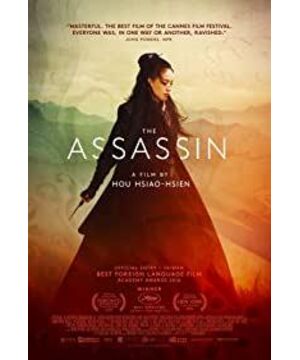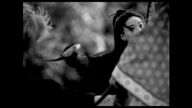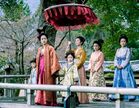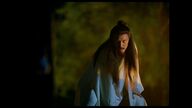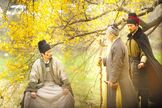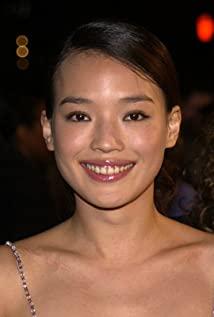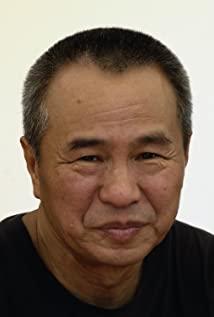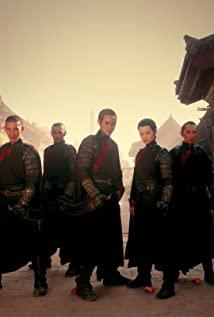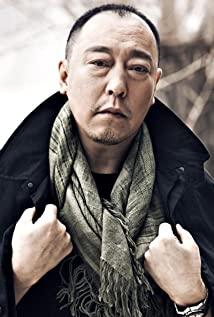Filming "Assassin Nie Yinniang" is still a big challenge for Hou Xiaoxian, who has been on the battlefield for a long time. Prior to this, as he described it: "Put your own life process and growth experience slowly in the movie, and go to the real" ("Time Cooks the Sea", Bai Ruiwen). Since the beginning of "The Man from the Wind Cabinet" in the 1980s, most of his films are derived from his intuitive experience of life. It took a long time to prepare and experience the environmental and social atmosphere of that city in person, and gain intuitive experience from all angles. The theme of "Assassin Nie Yinniang" was the first time that he completely removed any opportunity for him to actually experience the characters, environment and atmosphere. For this assassin story that happened more than a thousand years ago, the only thing he can do is to extract elements that can construct the environment from reading and researching the vast historical materials, not only to restore but to create a new one. The environment allows the film to have a solid foundation for its existence. History "Nie Yinniang" is a very strange and weird one in the Tang novels and closely follows historical facts. Its short one thousand words are constructed on the basis of the intricate political struggle in the history of the Tang Dynasty. On the one hand, after the Anshi Rebellion, the vassals of the Tang dynasty were divided, especially headed by the local military and political leaders of the three towns of Heshuo. They were self-contained, did not pay taxes, and did not accept the appointment of the imperial court. He also maintained the apparent harmony with the central government, consolidating his power through marriages, titles, and exchanges, and tried his best to maintain an advantageous position in the competition with other vassals. The Tang Dynasty’s central court’s political strategy was tit-for-tat, marrying the royal family members to the local princes of the town to continue the influence of the royal family by blood, and at the same time put eyeliner around them to eliminate attempts to strip the town from the power of the Tang royal family. . One of the core characters of the film "Assassin Nie Yinniang" is Tian Ji'an, one of the three towns that ruled Wei Bo. His adoptive mother was Princess Jiacheng who married Wei Bo under the Tang royal family, and his wife Tian Yuan was from the Tang Dynasty. The daughter of the rebel general Yuan Yi, who turned his back on Li Baozhen, the Zhaoyi Jiedu who was loyal to the imperial family, and led 10,000 to Tian Ji'an's father, Tian Xu, who had raided the Tang Dynasty several times. Hou Xiaoxian’s creative team clearly studied this period of history and captured the complex context of control and anti-control between the Tang Dynasty imperial family and several generations of Wei Bo Jiedu: the core of this contradiction is Jiedu Tian Ji’an. On one side is the Yuan family, headed by his wife Tian Yuan, who is hostile and refusing to submit to the Tang royal family; on the other side is the royal power cultivated by his deceased adoptive mother, Princess Jiacheng. He lived in it, vacillating, trying to build a kind of The fragile balance maintains its own independent power position. Nie Yinniang appeared at the moment when this contradiction vortex was about to reach its peak. Hou Xiaoxian's team made a fictitious sister of Princess Jiacheng, and Princess Jiaxin, who was a monk as a Taoist aunt, was the continuation representative of the royal family. She took Wei Boya and Nie Yinniang, the daughter of Nie Feng, trained her as an assassin and sent her back to Wei Bo to assassinate the rebellious Tian Ji'an. The royal family tried to solve the problem once and for all. On the one hand, Tian Yuan's family tried their best to protect their children as an assassin. Wei Bo’s status as heir, tried to eliminate any variables in the inheritance of power (the Taoist spells of Tian Ji’an’s pregnant concubine Hu Ji). Bo's power. Nie Yinniang, who is at the center of a political conspiracy struggle, not only has to face the tremendous pressure of her mission, but also her own emotional choices, because the Tian Ji'an she wants to murder is her childhood lover. It is against such a complicated historical background that "Assassin Nie Yinniang" slowly unfolded its image scroll. Style For ordinary commercial film directors and screenwriters, such complex entanglements are the best platform for establishing epic narratives and dramatic conflicts. They can use this to turn it into a thrilling action historical blockbuster. But this is not Hou Xiaoxian's goal. Even if the time setting of the film goes back to the ancient times more than a thousand years ago, he still has to carry out the vivid Hou style video language, the actors' performance methods and the unique scene scheduling methods matched with them. Different from the image style with the characteristics of "healthy realism" in the early 1980s, Hou Xiaoxian has gradually formed his own set of unique film aesthetics system since 1994's "Dream of Life": He has thrown away the usual The narrative logical arrangement is based on one's own intuitive experience, and is fascinated by shaping and restoring a "movie environment" that almost completely matches the texture and rhythm of real life, making the shooting of the movie equal to the process of life, using the details contained in the environment The element stimulates the actor's instinctual response, thereby gaining the emotional appeal of the actor's instinct and intuition. At the same time, he greatly weakened the intensity and density of editing, and instead focused on the design of light and shadow levels and the movement of characters in the lens, trying to make the picture and the performance of the actors fully integrated with maximum continuity. Simply put, this is a naturalistic trend toward film director aesthetics that replaces micro-control with overall control, and replaces artificial arrangements with intuitive experience. What it embodies on the screen is the perceptual charm produced by the tension between emotions, emotions and the relationship between characters, which overwhelms the ups and downs of the plot that most of our audiences are familiar with and expect from the "storytelling" of movies. drama Experience. Precisely because of this, starting from "Life in the Dream", he gradually excluded rhetorical means such as symbols and metaphors from the image language, and refused to symbolize and meaningful interpretation of his films, because he focused on the points It focuses on the impact and appeal generated by the combination of environmental atmosphere, actor's instant emotional explosion and screen scheduling. The charm and value of his films all come from the manipulation and release of intuitive experience. Adhering to this line of thinking, one of the focus of the shooting of "Assassin Nie Yinniang" is the sculpting of the environment. Art director Huang Wenying once presented the high-end Shanghai concession on the screen with amazing shaping ability in "Flowers on the Sea". This time she has brought her ability to the limit again. Although, as a modern person, we know almost nothing about the living environment of the Tang Dynasty, she still uses the research of historical materials and rich imagination to make various details, including the interior of the hall, furniture and utensils, styling costumes, etc., one by one. Elaborate reconstruction to allow Hou Xiaoxian to continue his consistent film aesthetics system. They have high requirements for art production, and even the floating and swinging silk curtains in Tian Ji'an's bedroom are specially selected by Huang Wenying when he travels to India. In terms of location shooting, the film crew even crossed mountains and seas, from Taiwan to Japan, from Shennongjia to Inner Mongolia, and completed the story that should have happened in Hebei daimyo in several different locations thousands of miles apart. What Hou Xiaoxian expects is that the actor can have an intuitive sense of integration in such a rigorously structured atmosphere full of Tang Yun, return to the era more than a thousand years ago in inner perceptual feelings, and have a spiritual and soul communication with the characters. , And thus radiate the intuitive explosive power he had captured in his previous films. From this perspective, "Assassin Nie Yinniang" is not his breakthrough in his forty years of film industry experience, but a bold attempt to extend his style of expression from modern society to the retro fantasy world. The perception of the 2015 Cannes Film Best Director's laurel is actually to praise Hou Xiaoxian's courage and boldness in integrating modern image style into the ancient environment by recreating the atmosphere. Of course, Western film critics are indeed intoxicated by the stunning visual experience of the Tang Dynasty. But for Chinese audiences, "Assassin Nie Yinniang" is still an art film that is very different from the martial arts action film we imagined. First of all, Nie Yinniang and his opponents Jing Jing'er and Kong Kong'er in the original work are both warlock assassins with superb spells that can change their bodies at will. Under normal circumstances, any director with a commercial sense will not let go of the details that can add visual appeal to the film. However, Hou Xiaoxian created a realistic space atmosphere in order to recreate reality to give the actors a naturalistic appearance. In the performance environment, almost all the fantasy details in the original work are deleted, and only the setting of the paper man possessed by Orchid is added, so that the film has lost a lot of conventional visual glamorous passages invisibly. Secondly, in Hou Xiaoxian's design, the actors' dialogue in classical Chinese (like the Shanghai and Suzhou dialects in "The Flower on the Sea") is an important means for them to return to the past and integrate into the environment. However, Zou's writing is obviously too literary, making the audience almost unable to understand the original meaning and obtaining sufficient rational and perceptual information. It also makes the actors themselves produce an unnatural sense of stiffness in the performance of chanting, which has almost the opposite effect to Hou Xiaoxian's willingness. What's more, Hou Xiaoxian has an instinctive rejection of clear narratives and background explanations to some extent. The film ratio of the film is as high as 1:44, which means that during the filming process, a large number of background introductions about the characters in the film were shot according to the original script, and the complicated relationship entanglements between each other and the development of the story process were "relentless" by Hou Xiaoxian. Deleted. According to his words: "If you are unhappy, you have to find a way to remove it. After you remove it, how do you think about the connection" ("The Zero Degree of Interpretation", by Xie Jiajin and Wang Zhiqin). He doesn't care whether the plot or even the connection between the pictures jumps, whether the narrative logic is complete, but only investigates whether the overall expression of the artistic conception is perfect. Under such circumstances, "Assassin Nie Yinniang" releases to the audience a novel viewing experience: without an accurate understanding of the historical background of the Tang Dynasty during this period, ordinary audiences are aware of the progress of the plot and the behavioral motivations of the characters. The logic is almost impossible to grasp, like falling into the clouds and mist; what impresses them is the silent contemplation, action, confrontation, fighting, and death of the characters in various exquisite and magnificent scenes. Like a long scroll, slowly unfolding, on the deep and exquisite background gradually revealed the calm, gorgeous and cruel daily life of the assassins, samurai and nobles. For Chinese-speaking movie audiences, this will also be an unprecedented challenge to movie-watching habits and interest. (Published in "Weekend Pictorial", August 22, 2015) To some extent, there is an instinctive rejection of clear narratives and background explanations. The film ratio of the film is as high as 1:44, which means that during the filming process, a large number of background introductions about the characters in the film were shot according to the original script, and the complicated relationship entanglements between each other and the development of the story process were "relentless" by Hou Xiaoxian. Deleted. According to his words: "If you are unhappy, you have to find a way to remove it. After you remove it, how do you think about the connection" ("The Zero Degree of Interpretation", by Xie Jiajin and Wang Zhiqin). He doesn't care whether the plot or even the connection between the pictures jumps, whether the narrative logic is complete, but only investigates whether the overall expression of the artistic conception is perfect. Under such circumstances, "Assassin Nie Yinniang" releases to the audience a novel viewing experience: without an accurate understanding of the historical background of the Tang Dynasty during this period, ordinary audiences are aware of the progress of the plot and the behavioral motivations of the characters. The logic is almost impossible to grasp, like falling into the clouds and mist; what impresses them is the silent contemplation, action, confrontation, fighting, and death of the characters in various exquisite and magnificent scenes. Like a long scroll, slowly unfolding, on the deep and exquisite background gradually revealed the calm, gorgeous and cruel daily life of the assassins, samurai and nobles. For Chinese-speaking movie audiences, this will also be an unprecedented challenge to movie-watching habits and interest. (Published in "Weekend Pictorial", August 22, 2015) To some extent, there is an instinctive rejection of clear narratives and background explanations. The film ratio of the film is as high as 1:44, which means that during the filming process, a large number of background introductions about the characters in the film were shot according to the original script, and the complicated relationship entanglements between each other and the development of the story process were "relentless" by Hou Xiaoxian. Deleted. According to his words: "If you are unhappy, you have to find a way to remove it. After you remove it, how do you think about the connection" ("The Zero Degree of Interpretation", by Xie Jiajin and Wang Zhiqin). He doesn't care whether the plot or even the connection between the pictures jumps, whether the narrative logic is complete, but only investigates whether the overall expression of the artistic conception is perfect. Under such circumstances, "Assassin Nie Yinniang" releases to the audience a novel viewing experience: without an accurate understanding of the historical background of the Tang Dynasty during this period, ordinary audiences are aware of the progress of the plot and the behavioral motivations of the characters. The logic is almost impossible to grasp, like falling into the clouds and mist; what impresses them is the silent contemplation, action, confrontation, fighting, and death of the characters in various exquisite and magnificent scenes. Like a long scroll, slowly unfolding, on the deep and exquisite background gradually revealed the calm, gorgeous and cruel daily life of the assassins, samurai and nobles. For Chinese-speaking movie audiences, this will also be an unprecedented challenge to movie-watching habits and interest. (Published in "Weekend Pictorial", August 22, 2015) Gorgeous and cruel everyday. For Chinese-speaking movie audiences, this will also be an unprecedented challenge to movie-watching habits and interest. (Published in "Weekend Pictorial", August 22, 2015) Gorgeous and cruel everyday. For Chinese-speaking movie audiences, this will also be an unprecedented challenge to movie-watching habits and interest. (Published in "Weekend Pictorial", August 22, 2015)
View more about The Assassin reviews


